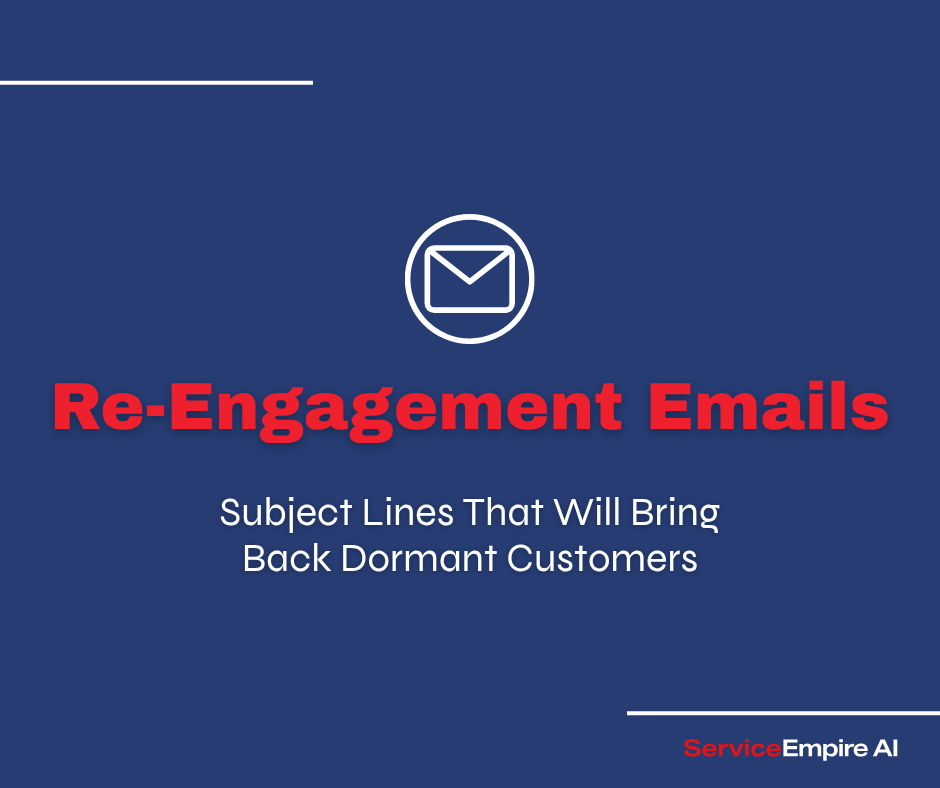
Want to win back customers who've gone quiet? Here's how top service companies use proven subject lines in re-engagement emails to revive dormant customers and bring them back for more business.
Psychology Behind Winning Subject Lines
First, understand why these subject lines work. They tap into powerful psychological triggers: curiosity, fear of missing out (FOMO), and the desire for special treatment. The best subject lines make customers want to open the email immediately. They want to see what they might be missing.
Our data shows that personalization dramatically increases open rates. Adding the customer's name or referencing their specific service history can double your open rates. But it's not only about using their name - it's about showing you remember them.
7 Proven Subject Line Formulas
The "We Miss You" Approach:
"[Name], we haven't seen you since [last service date]" works because it's personal and specific. It reminds customers of their positive experience with your company while creating a slight feeling of guilt.
The Special Offer Strategy:
"An exclusive welcome back offer for [Name]" performs well because it makes customers feel valued. The word "exclusive" suggests they're getting special treatment, encouraging them to open and act.
The Time-Sensitive Tactic:
"Last chance to keep your preferred customer status" creates urgency without being pushy. It suggests they might lose something valuable if they don't act soon.
The Curiosity Hook:
"Why 80% of our customers changed this service habit." This works because it hints at insider knowledge and makes people want to learn what they might be missing.
The Problem Solver:
"[Name], is this why we haven't seen you?" This subject line opens a dialogue and shows concern while prompting customers to engage with your message.
The Social Proof Angle:
"What [City] homeowners learned about [service] this year." This works by combining locality with FOMO, making customers curious about what their neighbors know.
The Direct Question:
"Ready to schedule your next [specific service], [Name]?" - Sometimes straightforward works best. This reminds them of your service while making it easy to say yes.
Each of these subject lines has been tested and proven to drive open rates above industry averages. When used as part of a strategic re-engagement sequence, they help bring dormant customers back into active status.
Testing and Optimization
Test different subject lines with small segments of your dormant customer list. Track open rates, click-through rates, and most importantly, service bookings. The data will show you which approaches work best with your specific customer base.
Pay attention to timing. Are emails on Tuesday mornings getting more opens than Friday afternoons? Test different times with your audience to find your optimal sending window.
Implementation Guide
Start your re-engagement campaign with your most recent dormant customers first. They're the most likely to respond positively. Define "dormant" based on your typical service frequency. For some businesses it might be three months, for others a year. In seasonal businesses, like HVAC, you'll want to have seasonal plans and ideas as we outline in the HVAC marketing guide.
Create a sequence of three to four emails, each with a different approach. The first might be a gentle reminder, the second a special offer, and the third a "last chance" message. This variety increases your chances of connecting with different customer motivations.
Success Measurement
Track your campaign success by monitoring key metrics. These include open rates, click-through rates, and most importantly, re-engagement rates. Look for patterns in which customers respond to which messages. This information helps refine future campaigns.
Keep detailed records of which subject lines perform best with different customer segments. Some approaches work better with long-term customers versus newer ones who've gone quiet. Use this data to personalize your approach.
Remember that the goal isn't to get them to open the email - it's to bring them back as active customers. The subject line is the first step in rebuilding that valuable relationship.






